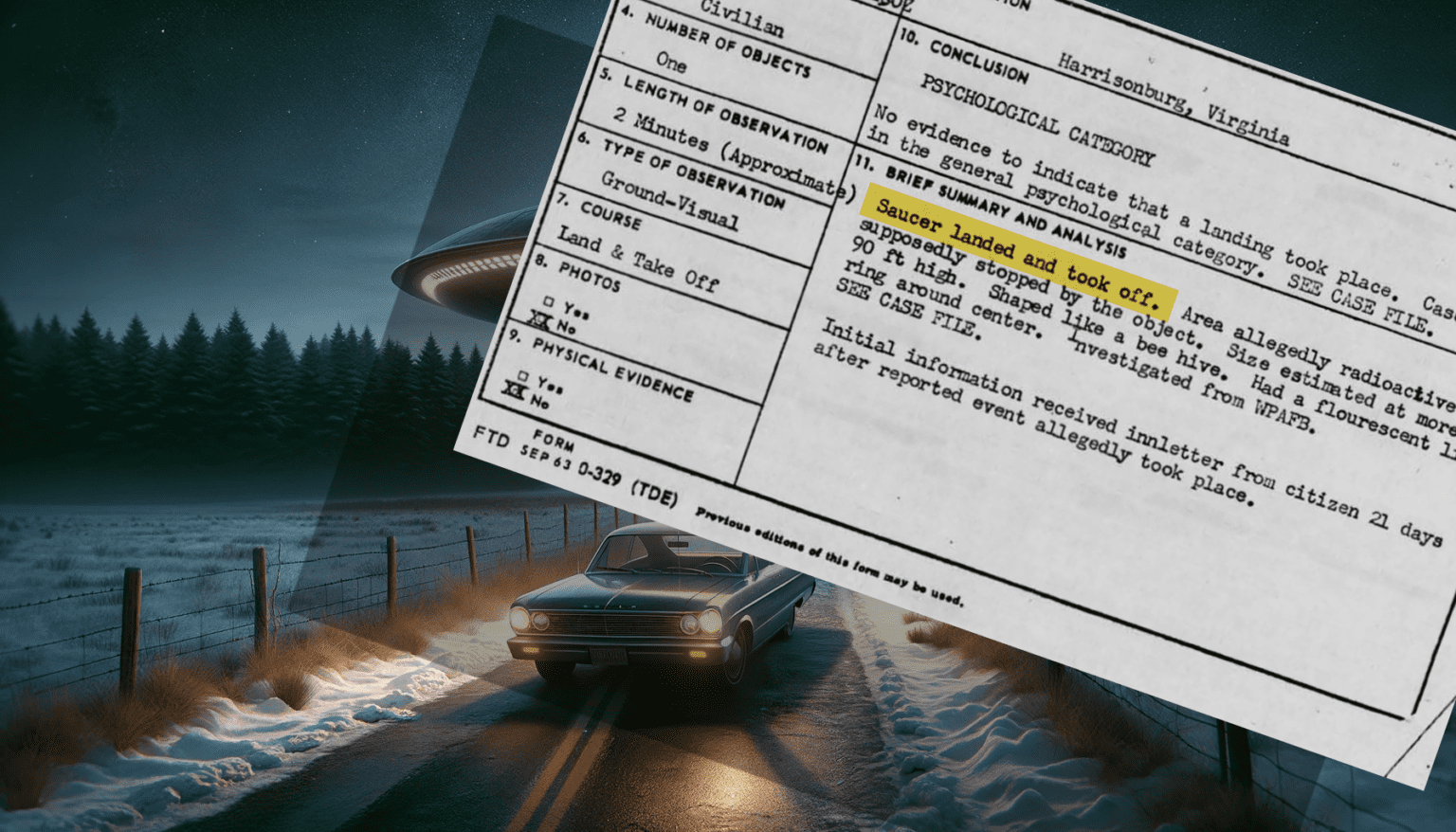On December 21, 1964, Horace Burns, a gunsmith from Harrisonburg, Virginia, reported an extraordinary sighting of a UFO. While driving along Route 250 near Staunton, Virginia, Burns witnessed an object he described as being 80 to 90 feet high and 125 feet in diameter. This object, according to Burns, landed about 100 yards from the highway, emitted a fluorescent light, and was shaped like a beehive.
Burns detailed that as the UFO crossed the road ahead of his vehicle, his car’s engine stalled, and it came to an unnatural stop. The UFO allegedly rested in a meadow for 60 to 90 seconds before taking off again with a sound of rushing air, heading northeast.
Burns reported the incident to Professor Ernest Gehman from Eastern Mennonite College. Gehman, alongside Burns, visited the landing site. Using a Geiger counter, Gehman detected significant radioactivity in the area where the UFO purportedly landed. This finding was corroborated by two DuPont research engineers, Harry Cook and Mr. Funk, who joined Gehman at the site and witnessed the high radiation levels recorded by the Geiger counter.
On January 12, 1965, Technical Sergeant David Moody and Staff Sergeant Harold Jones from Wright-Patterson Air Force Base arrived to investigate the incident. They were accompanied by Burns, Gehman, and Clair Weaver, a student president of the UFO Investigators group at Eastern Mennonite College.
Sergeant Moody used a Model 2586 Beta-Gamma Survey Meter to test the area but reported no significant radiation levels. Gehman noted discrepancies in Moody’s testing methods, such as the quick adjustment of the meter when it started to rise, which led to the conclusion that no radiation was present. Despite the findings and testimonies provided by Burns and Gehman, the Air Force’s final report concluded that there was no evidence to support the occurrence of a UFO landing.
Key Points of Contention
Radioactivity Findings: Gehman and his associates recorded high levels of radioactivity at the site shortly after the incident. In contrast, the Air Force investigation, conducted weeks later and under different conditions (such as snowfall), did not confirm these findings.
Witness Testimonies: While the Air Force report mentioned no additional witnesses, Gehman and Burns provided consistent accounts supported by Cook and Funk. Gehman also highlighted the lack of consultation with these witnesses by the Air Force investigators.
Physical Evidence: The Air Force report noted no physical depressions in the grass or any other indicators of a landing. However, Gehman pointed out that the meadow had been mowed for hay, making it difficult to observe such evidence under the snow-covered conditions during the investigation.
Technical Discrepancies: Gehman questioned the suitability of the Air Force’s equipment and methods, particularly the Beta-Gamma Survey Meter’s effectiveness in detecting alpha particles. He also criticized the Air Force’s estimation of the height of power lines the UFO allegedly crossed, which was significantly off the mark.
Despite the detailed testimonies and initial findings of high radioactivity, the Air Force’s Project Blue Book ultimately categorized the Harrisonburg sighting as lacking evidence. The final report dismissed the incident as having no substantiated proof of a UFO landing, citing the absence of additional witnesses and physical evidence.
Project Blue Book Files
 The Alleged 1964 UFO Landing in Harrisonburg, Virginia [55 Pages, 12.1MB]
The Alleged 1964 UFO Landing in Harrisonburg, Virginia [55 Pages, 12.1MB]
 Loading...
Loading...
Follow The Black Vault on Social Media:

